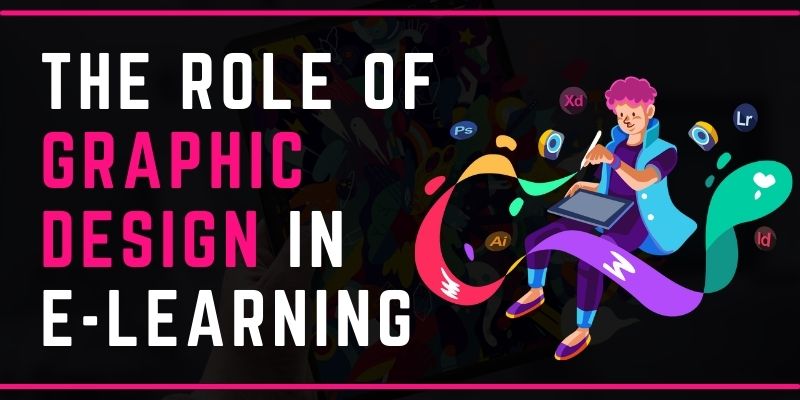
Graphic Design in eLearning: The Role of educational graphics in Creating Effective eLearning Classes
Imagine yourself 10 years after graduating from school and suddenly finding yourself in a position to enrol in a class to advance your career. This is not related to a high education degree. To withstand a highly competitive domain, you must update yourself with industry developments.
It’s nearly inconceivable to discover time for work when you have commitments. Then you find out that eLearning has the right option for you. Sign up Online Graphic Design Course, and you can start the course at your own pace during breaks throughout the week. Design is what makes eLearning materials so effective. Graphic designers use a variety of techniques and principles to improve educational graphics. Here are four reasons educational graphics is so effective in eLearning.
Summary: The success of eLearning courses depends on the quality of graphic design. The demand for graphic design in education is increasing. This article will discuss 4 reasons graphic design is so important in eLearning.
Learn educational graphics with the aid of Graphic Design Courses in Chennai under the guidance of industry experts.
Why Graphic Design Is Important In eLearning
Graphic Design creates focal points. An eLearning module that is well-designed “guides” students as they learn. Graphic design draws attention to the most important aspects of a course by creating focal points. A simple font size change can help you remember important terms even if the page or slide is stuffed with text.
Designers have the ability to manipulate the order of core ideas to emphasize them, such as placing them at the top or front and centre. You can break up the monotony by using a different colour or shade of text to highlight the importance of a concept.
Design Elements Create Relationships between The Topics.
It doesn’t matter how eager you may be to learn, and it is easy to lose yourself in the sea of words when reading on a tablet or computer. This leads to a very hard understanding of the lesson. This is solved by graphic design, which fuses the module with colours and patterns.
Even simple patterns can create an orderly feeling and establish a connection between ideas without explicitly stating so. Contrast can emphasize opposing ideas and make the topic more interesting and engaging. To help learners understand differences better, contrast colours can highlight different text blocks.
Helps Learners with Navigation.
The eLearning modules are linear in nature. You only need to follow one path to complete a lesson. After reading a slide, you tab on a switch to proceed to the following one. Learners often don’t realize that they can navigate the page themselves, in addition to the linear navigation.
The design helps with navigation. The eLearning module can prompt learners to assess or review their progress without the assistance of a facilitator.
Good Design enhances Readability, and Even Content Includes Advanced Technical Topics.
Course designers face a challenge in communicating complex topics (such as technical ones) in an easy-to-understand manner. Graphic design elements can be used to improve the readability of the material. White space is a visual element that allows you to separate concepts from one another.
Break down technical topics into separate slides or pages so learners don’t become overwhelmed by the amount of data. As mentioned earlier, font size, colour, and style are important to highlight key concepts and make them easier to remember.
Conclusion
Graphic design is an integral part of course creation. However, the content of a module is crucial to its success. To Learn and employ graphic design in education, fetch with FITA Academy, the leading Graphic Design institute in Chennai. Their mentors have decades of experience in the graphic design field.
